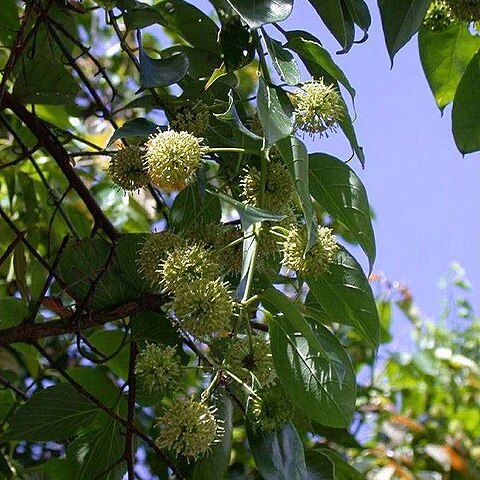Woody lianes or sometimes forming scrambling bushes or thickets; flowering branches bearing strongly curved hooked spines. Leaves petiolate; stipules simple or 2-lobed, deciduous. Inflorescences globose, solitary, axillary or terminal; flowers not fused, pedicellate. Calyx-tube ellipsoid, the free part well developed, shallowly 5-undulate to distinctly 5-toothed, persistent. Corolla-tube filiform-cylindrical, funnel-shaped at the throat; lobes 5, imbricate or quincuncial. Stamens with filaments very short; anthers apiculate, 2-thecous. Ovary 2-locular; placentas peltate, entirely covered with imbricated ascending ovules; style long and narrow, well exserted from the corolla; stigma slightly thickened with 2 marks on either side. Fruits fusiform, dry, dehiscent, borne on accrescent pedicels. Seeds small, with long fine wings from opposite ends, mostly 1 from one end and 2–3 from the other.
Vines or sprawling shrubs, armed with recurved spines (aborted peduncles). Leaves opposite, the stipules interpetiolar. Inflorescences axillary and terminal, numerous, in globose heads. Flowers 5-merous, the hypanthium spindle shaped or turbinate, the calyx lobes valvate; corolla funnelform, pubescent outside, gla-brous within, the lobes 5, valvate; stamens 5, the anthers oblong, sagittate at the base, the filaments short, inserted at the mouth; ovary 2-celled, the style slender, the stigmas small, capitate, the ovules numerous, ascending, the ovarian disc obsolete. Fruits capsular, septicidally dehiscent, each valve splitting at the apex; seeds numerous, imbricate, winged, the wing frequently split.

